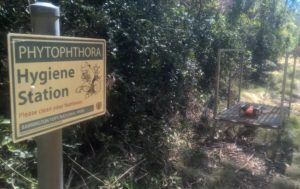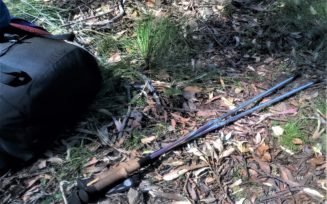Are You a Biosecure Bushwalker? Part 2: The Solutions
This post follows after our post Part 1: The Risks based on Sharon Fulcher’s Are you a ‘Biosecure Bushwalker’? presentation.
What are the solutions to reduce the many biosecurity risks and protect the bush for our future generations? Sharon breaks it down for us into three points:

- Being aware of the NSW Biosecurity Act 2015
Becoming better informed as bushwalkers is Sharon’s first point. If you can have a look at The Commonwealth Biosecurity Act 2015, you’ll notice we are required to be aware of the biosecurity risks we are causing when we walk, and to proactively take measures to prevent, minimise and eliminate them as reasonably practicable.
- Understanding that it is our responsibility
The responsibility of biosecurity risk is a shared one among the community as well as industry and government. Sharon says “There are very few references in Minimum Impact Codes and Leave No Trace about Biosecurity issues as it is a developing area requiring review by all outdoor clubs. The first step to prevention is awareness raising, reviewing the Minimum Impact Code and how it relates to Biosecurity measures.”
- Look at things that can help us be ‘Biosecure’
Finally we need to act. Here are Sharon’s suggestions around choice of Clothing, Gear, and Actions Out In the Bush are below – stay tuned for more information on this in next month’s article.
Clothing
- Choose ‘no weave’ or ‘close weave’ clothing
- Wear knee length gaiters or long pants and sock protectors
- Carry a small brush/toothbrush for daily removal of seeds and mud
- Carry a zip lock bag to dispose of seeds picked off clothing and socks and carry it out. Dispose in the ‘red bin’
- Make sure pockets are closed
- Ensure your boots have been scrubbed clean and sprayed with a solution of 70% metho to 30% water.

Gear
Ensure you have washed or sprayed your tent pegs, walking poles, bottom of gaiters, and bottoms of packs
Ensure your vehicle is clean, including floor mats and there is no old mud sticking to the vehicle.
When you are out in the bush
- Use a boot cleaning station if available (or use a spray kept in your car)
- Keep a spray bottle in the car of 70% metho to water and a brush to clean tyres, canopies etc before you leave a site, especially if travelling to another site.
- Keep to walking tracks if you can to avoid spreading diseases/seeds into untracked areas, especially on wet ground.
- Empty tent of debris where you are camped – don’t carry the seeds many kms from one area to another
- Thoroughly clean and remove all dirt and plant material on backpacks, boots, socks and other gear before you leave a site and check before going to another site especially in wet conditions. Carry a small brush.
- When parking your car, avoid weedy areas near carparks
- Ensure your toileting practices involve good burial, being downstream and well away from any water source
In Part 3 we’ll cover Sharon Fulchers’ suggestions on how our clubs and leaders can help others follow and maintain biosecurity measures on a walk.
Read the “Are you a Biosecure Bushwalker?” presentation.
Notes, slides and content courtesy of Sharon Fulcher.
Photos by Jaimey Foti

[…] sloshing through creeks near where frogs hang out, we might want to look at brushing up on our Solutions and have a think about how we clean our gear before and after the […]